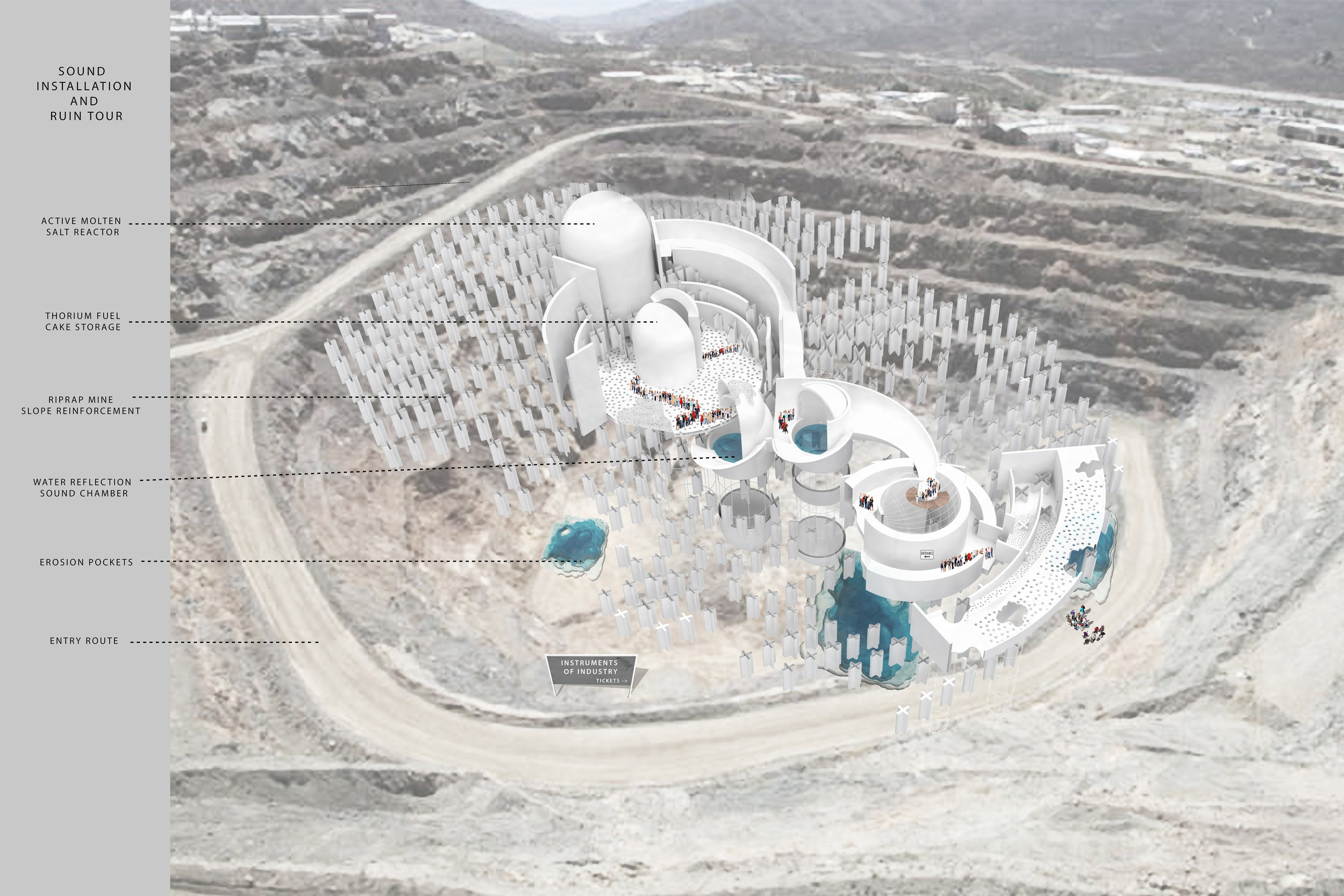Spring 2017
Instructors: Nataly Gattegno, Hugh Hynes
This studio forecasted the architectural opportunities afforded by California’s rapidly transforming landscape of energy production. With widespread decommissioning of obsolete power plants on one hand, and legislation mandating ambitious targets for renewable sources on the other, one may predict an imminent transition over the next few decades to radically new forms of production such as Next-Gen nuclear power to meet the state’s voracious power needs. Much like the the coal- and petroleum-based economies that defined past centuries, such shifts in the energy economy would trigger wholesale transformations of the built environment, industrialized landscape, and associated ecologies.
The studio leveraged decommissioned infrastructure sites across California’s “energy equator” that crosses the state east-west from the Mojave Desert to San Luis Obispo to produce new symbiotic, parasitic and hybridized architectural organisms. Much like the monstrous “kaiju” of Cold War sci-fi, these massive new creatures opportunistically and hungrily seek energy wastes – heat, electrical, radioactive – that are an inevitable byproduct of any power production system to construct new competitive and cooperative relationships among architecture, technology, landscape, ecology and infrastructure.
No mere B-movie plot, these energy scenarios probed multiple trajectories and narratives by which new architectural contexts may emerge: pop-up company towns, mines retooled as luxury resorts, rogue transportation nodes, test tracks fueled by nuclear waste, biome “zoos” in cooling ponds, electrified robotic mega-farms. These speculative energy-architecture composites mine the pervasive byproducts and opportunities of these existing sites. Throughout the studio we probed alternative methods of video and narrative representation, but more importantly architecture’s capacity to speculate, forecast and be an active force of persuasion in this future landscape.

















